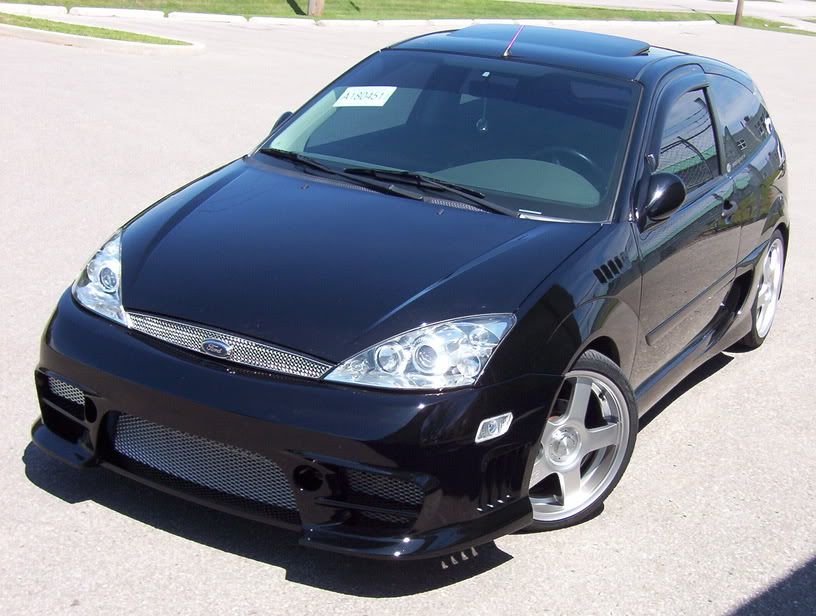04-26-2007, 09:47 PM
Next-gen Ford Fiesta subcompact set for N.A. in 2009; vehicle to mirror European model.
Source: Motortrend.com
By Paul Horrell
04-26-2007
Ford's next-generation Fiesta subcompact, due in late 2008 for Europe, is set to go on sale in North America a year later and will arrive essentially unchanged from the European model, according to Ford officials.
![[Image: ford_fiesta_zetec_s_500.jpg]](http://img.photobucket.com/albums/v81/frost__2001/ford_fiesta_zetec_s_500.jpg)
The U.S. Fiesta project was confirmed by Ford prior to March's Geneva Motor Show. The struggling automaker's desperate need for a fuel-efficient subcompact (B-segment in Europe) clearly factored into the decision to bring the vehicle stateside.
Since Alan Mulally became Ford CEO, the ever-swinging 'world cars' pendulum has moved back toward selling some cars globally, rather than keeping the blue-oval model ranges separate in the U.S. and Europe.
Ford of Europe design chief Martin Smith explains. 'It used to be clear. I went to Detroit and gave a presentation about [the European design language] Kinetic Design. Peter Horbury [the U.S. design chief] gave one about Red, White and Bold [the U.S. language]. They were completely different.' But Smith says the demarcation is breaking down. Cars with one design theme will be sold in the other market.
The new Fiesta will look almost exactly the same in the U.S. as it will in Europe. It was signed off on before the decision was made to sell it here. Minor engineering changes, including a slightly longer nose, will be necessary to federalize the U.S. model, but it will be 'a kinetic-design car, absolutely,' says Smith.
So forget about Ford's sheer surfaces and rectangular three-bar chrome grille. Instead, the Fiesta will have a trapezoidal grille below the licence plate and pointy headlamps that run back to the front wheel arches. The vehicle will also feature pronounced wheel arches front and rear, an undercut crease beneath a strong side shoulder, a side-window graphic that kicks up strongly at the rear, and rounded rear glass.
Under the skin, the next-gen Fiesta uses the same vehicle architecture first seen on the new Mazda2, which was unveiled at Geneva and is scheduled mainly for the Japanese and European markets.
The package's main aim is light weight with strength, so as to be crash-safe yet return excellent fuel economy and decent performance from its 1.6-liter engine (likely the U.S.-spec block). So it uses a lot of high-strength steel in its structure. It will also be lighter than Ford's current Fiesta (pictured above), bucking industry trends.
While the Fiesta project was clearly directed from the top, one European executive told us not all the developments at Ford being done in response to Mulally requests are so certain. 'No-one wants to tell Mulally he's asking a stupid question,' he said. 'And people have interpreted lots of his "Why can't we...?" questions as assignments.' Our source believes once the dust settles there will be fewer new programs under Mulally than commentators - and indeed many insiders - currently believe.
Source: Motortrend.com
By Paul Horrell
04-26-2007
Ford's next-generation Fiesta subcompact, due in late 2008 for Europe, is set to go on sale in North America a year later and will arrive essentially unchanged from the European model, according to Ford officials.
![[Image: ford_fiesta_zetec_s_500.jpg]](http://img.photobucket.com/albums/v81/frost__2001/ford_fiesta_zetec_s_500.jpg)
The U.S. Fiesta project was confirmed by Ford prior to March's Geneva Motor Show. The struggling automaker's desperate need for a fuel-efficient subcompact (B-segment in Europe) clearly factored into the decision to bring the vehicle stateside.
Since Alan Mulally became Ford CEO, the ever-swinging 'world cars' pendulum has moved back toward selling some cars globally, rather than keeping the blue-oval model ranges separate in the U.S. and Europe.
Ford of Europe design chief Martin Smith explains. 'It used to be clear. I went to Detroit and gave a presentation about [the European design language] Kinetic Design. Peter Horbury [the U.S. design chief] gave one about Red, White and Bold [the U.S. language]. They were completely different.' But Smith says the demarcation is breaking down. Cars with one design theme will be sold in the other market.
The new Fiesta will look almost exactly the same in the U.S. as it will in Europe. It was signed off on before the decision was made to sell it here. Minor engineering changes, including a slightly longer nose, will be necessary to federalize the U.S. model, but it will be 'a kinetic-design car, absolutely,' says Smith.
So forget about Ford's sheer surfaces and rectangular three-bar chrome grille. Instead, the Fiesta will have a trapezoidal grille below the licence plate and pointy headlamps that run back to the front wheel arches. The vehicle will also feature pronounced wheel arches front and rear, an undercut crease beneath a strong side shoulder, a side-window graphic that kicks up strongly at the rear, and rounded rear glass.
Under the skin, the next-gen Fiesta uses the same vehicle architecture first seen on the new Mazda2, which was unveiled at Geneva and is scheduled mainly for the Japanese and European markets.
The package's main aim is light weight with strength, so as to be crash-safe yet return excellent fuel economy and decent performance from its 1.6-liter engine (likely the U.S.-spec block). So it uses a lot of high-strength steel in its structure. It will also be lighter than Ford's current Fiesta (pictured above), bucking industry trends.
While the Fiesta project was clearly directed from the top, one European executive told us not all the developments at Ford being done in response to Mulally requests are so certain. 'No-one wants to tell Mulally he's asking a stupid question,' he said. 'And people have interpreted lots of his "Why can't we...?" questions as assignments.' Our source believes once the dust settles there will be fewer new programs under Mulally than commentators - and indeed many insiders - currently believe.
I was the only member on this board with a Yellow Focus Sedan, and a 2002+ Euro Facelift on a sedan.






![[Image: mazda2.jpg]](http://www.lemonlawvehicle.com/wordpress/wp-content/uploads/2006/11/mazda2.jpg)